Steaming: devices and methods of ironing clothes
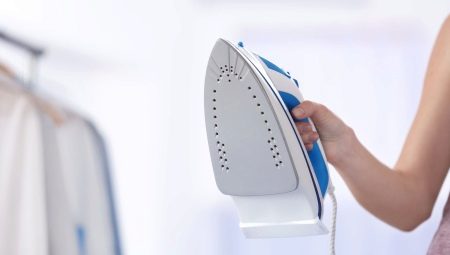
With the invention of the iron, it became much easier for housewives to take care of things. However, the existing variety of models of irons and steamers can raise a lot of questions and doubts. Manufacturers today urge everyone to steam iron things. This is the least traumatic ironing method for fibers. Let's talk about different methods of steaming today.
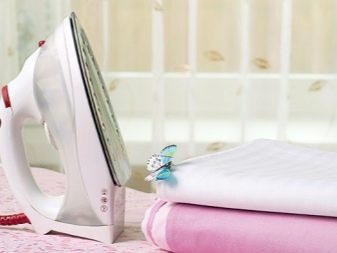

What it is?
The principle of operation of any steamer is based on the supply of a jet of hot steam under high pressure. This stream of moist hot air is directed onto the garment, thereby smoothing out the wrinkles on the garment. But this is not the only advantage and advantage of such devices. To understand why they are becoming more and more popular, let us analyze their main advantages.
- Respect for the fabric. The main problem with irons is that they can ruin or even burn through the product. It is impossible to do this with a steamer. The hot air gently smoothes the fabric, leaving no burn spots, gleams or creases on it.
- Reduced ironing time. Many people think that steam ironing takes longer. Indeed, the device needs more time to warm up, but then the process goes much faster.
This is especially true for complex things on which there are many flounces, ruffles, or there are several layers.
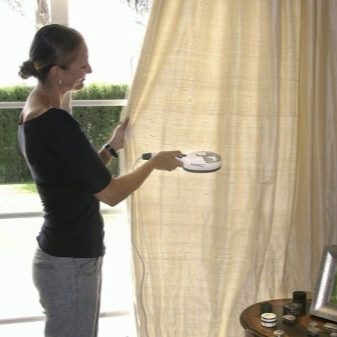
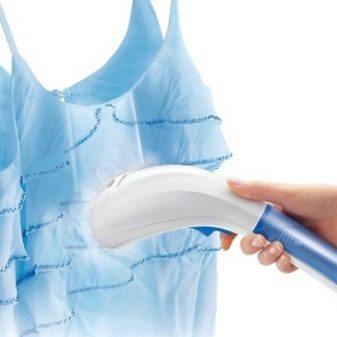
- There are things that are physically impossible to iron with an iron. These include delicate fine fabrics, wool and fur.But for a steamer, there are practically no restrictions on use. It is very convenient to use the device when caring for furniture, curtains and rugs.
- Possesses disinfectant properties. The high temperature not only smoothes the fabric, but also kills harmful microorganisms on it. This becomes relevant not only when ironing clothes, but also in the care of furniture, carpets and covers (furniture, automobile).
- Eliminates unpleasant odors. As in the previous case, this is true for those surfaces and objects that cannot be washed in a machine or by hand.
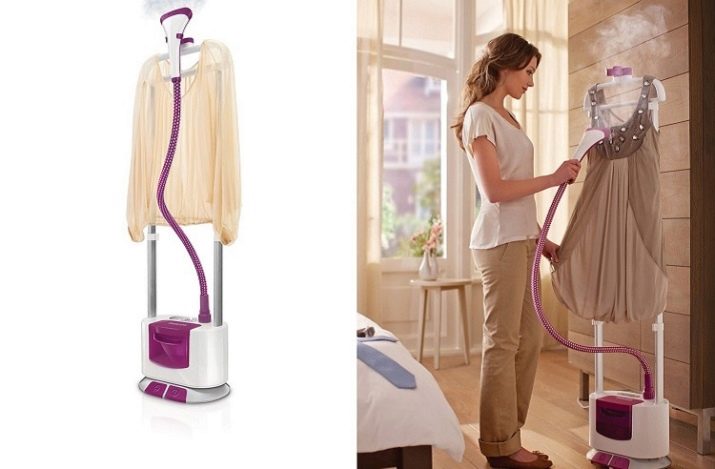
Varieties of devices
There are completely different steaming devices on the market. They differ in appearance, function, and price. To figure out which one is suitable for your purposes, a kind of classification of devices and a description of their advantages will help.
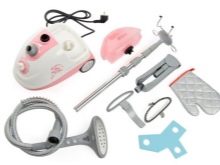
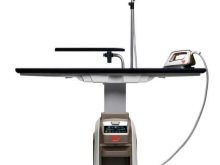

Manual
Small and affordable, the device will become an indispensable travel companion or as an addition to your iron. Consider it as the main ironing device is not worth it. A small reservoir and low power will create additional problems. The fact is that the operating time of the device is limited to 10-15 minutes. Then you will have to refill and reheat the water.
This is very inconvenient with a large volume of steamed products. But on trips, he shows his best side. It has a modest size and all that is required to work with it is an outlet, water and a hanger (although you can do without it).
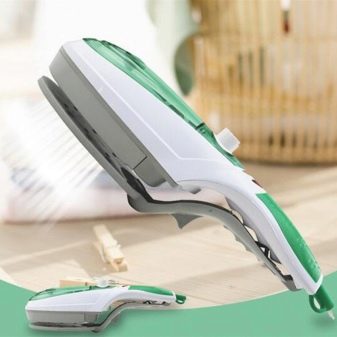
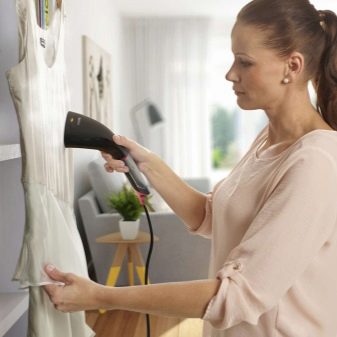
Floor
These devices compare favorably with the previous type in their characteristics. They are a water tank and a telescopic rack. There is a hose from the reservoir to which the steamer handle is attached (steam will be supplied through it). It can have several attachments or be the only one in the set.
More expensive models have not only a telescopic rack with a hanger, but also a vertical ironing surface. This makes the job easier. The clothes do not have to be additionally held, they will fit comfortably to the board.
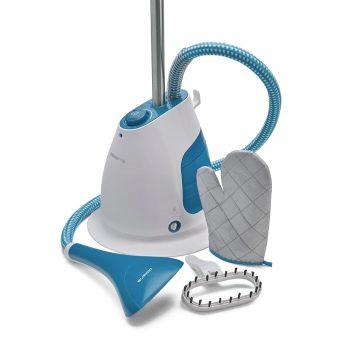
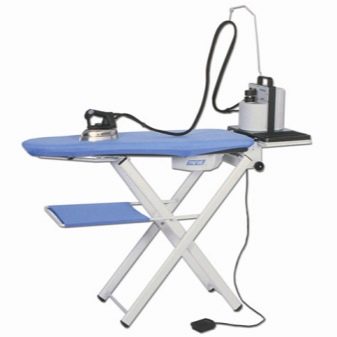
Steam generator
The device is a symbiosis of an iron and a steamer. It has a separate water tank. The device itself is identical to the iron. Pressurized steam is supplied from the tank through a hose. It hits the fabric through the holes in the soleplate of the iron.
The advantage of the device is the large water reservoir. You will not need to constantly add water when ironing large volumes. The downside is the low mobility of the device and the need to allocate additional space (stand) for the tank. Well, and, of course, you can't do without an ironing board.
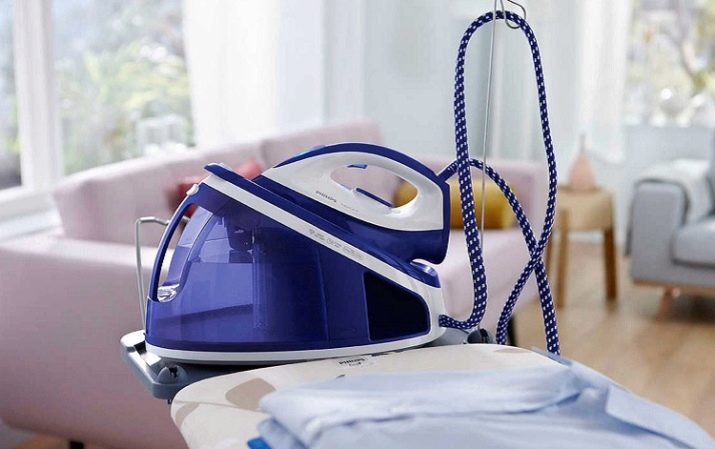
With steam cleaner function
Some modern devices are equipped with a function such as steam cleaning. If available, there will be no need for additional washings of items such as covers, furniture and heavy curtains. Of course, he cannot replace the traditional washing of curtains, but this will have to be done much less often. After all, the product will be kept clean most of the time. The difference from a conventional steamer is the constant supply of steam under pressure. Due to this, the cleansing effect is achieved.


How to use the iron?
Under the general name "iron" two devices can be hidden. This is both an ordinary iron and a device with a steamer function. At the same time, not only the methods of their application differ, but also the very principle of operation. To understand how to use them correctly, we will give a brief description of both devices.
Almost all modern iron models are equipped with a small water tank. But steam has a supporting function here. Smoothing occurs due to the heating of the sole of the device. The volume of the water tank is limited by the size of the iron itself. This amount will not be enough for a large number of products if steam is supplied constantly and under high pressure.But they can still smooth out small flounces or thin fabrics without touching the product itself.

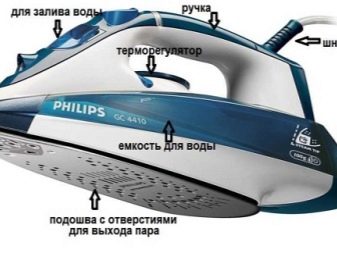
The iron steamer has a slightly different design. The water tank is located separately and is connected to the device with a thin hose. Steam is supplied through it. The smoothing effect is achieved by supplying hot, moist air and the sole itself. In this case, you can adjust the ironing temperature yourself, as well as the steam pressure.
With the first device, everything is clear and simple. It is familiar to many housewives and questions about its operation do not arise. But the steam generator appeared at our disposal relatively recently. Previously, they were only available to professionals working in dry cleaners and ateliers. Therefore, it is worthwhile to understand the principle of its use.
- Pour water into a special tank. It is worth noting that it will be possible to pour water into the iron with a steam generator during ironing, if the provided volume of liquid is not enough for you.
- Set the desired temperature and steam pressure. In many devices, this can be done automatically by switching the regulator to the desired mode for the type of fabric. Look also at the badge attached to the garment. Manufacturers indicate on it the conditions for caring for clothes, including the temperature and method of ironing.


- The steam button is located at the bottom of the handle. It is very convenient to clamp it when a constant supply of hot air is required. But you can iron it as usual. But do not leave the tank empty, as it will heat up and may fail without liquid.
- Another plus of the steam generator is the fact that even if you left it in a horizontal position, after 10 minutes it will stop heating up. This will prevent the risk of fire.
- The ironing process itself will be no different from using a regular iron. You position the item on the ironing board in the same way and begin to remove any existing creases and creases.
- The steam generator can also be used in an upright position. It is convenient for curtains maintenance. But then it is worth choosing a device with a long hose.
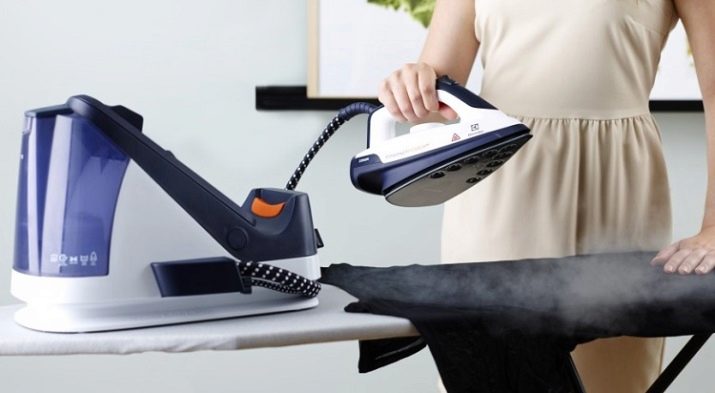
How to iron correctly?
Although the steamer is a universal ironing device, there are certain nuances in its use for various types of products. Let's figure out how to iron various materials and fabrics with it.
Cloth clothes
It seems that there should be no questions about using the steamer, because it is designed to smooth clothes. But would you dare to use a new device, for example, for ironing a wedding dress and veil? The question here is not only the price of the product itself, but also the key value that this thing plays. The use of an iron is out of the question when the question concerns very delicate fabrics. Then steam ironing comes to the rescue.
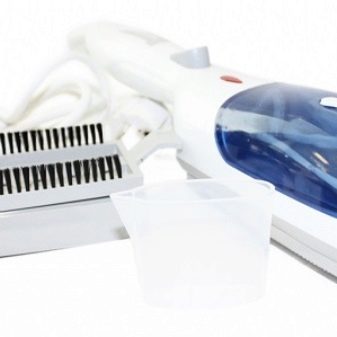
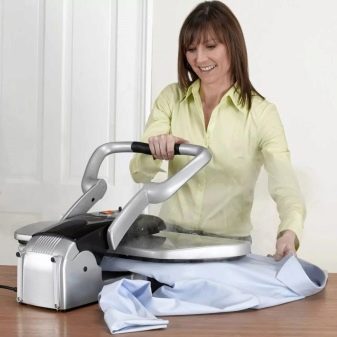
Here is just a small list of those things that you would not dare to entrust to an ordinary iron, but you can safely process it with a steamer:
- nylon;
- tulle (skirts, blouses);
- bows;
- berets and hats;
- parka, jacket and other outerwear;
- satin dress.
For each hostess, this list can be supplemented depending on those things that are present in the wardrobe. If you also have difficulties with these categories of things, then you should seriously think about buying this device. Of course, you can do without it, but there is no need to dispute the fact that the device greatly simplifies the care of many things.
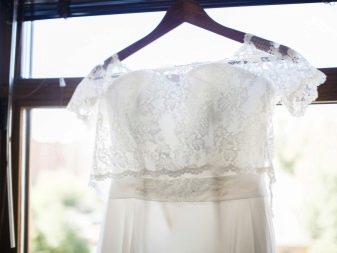
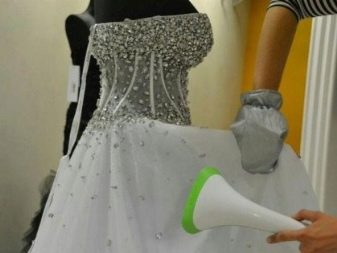
Fur products
Not a single fashionista would ever think of ironing her expensive mink coat with an ordinary iron or even a steam generator. For such a delicate product, only a steamer is suitable. In the process of improper storage, the pile can acquire creases and become wavy. And here you cannot do without this device.After all, it is precisely such devices that are used in professional dry cleaners and fur sales salons (only their power and functionality is much wider). In order not to spoil the fur itself and the skin under it, it is necessary to adhere to some rules when steaming the product with your own hands.
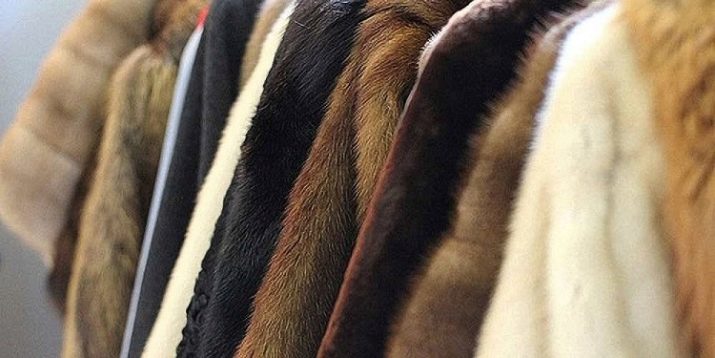
- The product should hang on wooden hangers. Their size should be optimal for a given fur coat.
- Steaming begins with warming up. For this, the device must be kept at a distance of 20 cm from the product. You can gradually reduce it to 15 cm. But do not lean the steamer close to the pile.
- After finishing work, shake the product several times. This will eliminate a lot of water. Without removing the fur coat from the hanger, hang it up to dry.
In this way, you can steam a mink coat, arctic fox products (including collars and edging) at home. The same steaming rules apply to artificial products. Only here you can skip the warm-up phase, as there is no risk of damaging the natural pile or leather lining.


Knitten things
In addition to the fact that these products require special care when washing, the ironing process is associated with certain risks. In this case, the steamer also comes to the rescue. The fact is that even special modes on ordinary irons do not guarantee you the complete safety of natural fibers. One awkward movement or delay in work can completely ruin your favorite sweater.
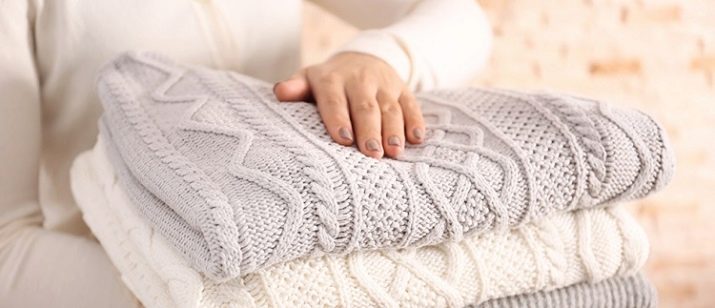
When using steam, the product will not lose its attractive appearance, get rid of folds and irregularities and remain intact. To do this, dry it after washing. It is best to do this on a vertical surface to minimize the risk of shrinking or stretching of individual parts. Next, hang the thing on a hanger. These can be those that come with floor devices or a regular hanger. If your steamer has a function for selecting a mode, then turn on the appropriate one and start ironing.
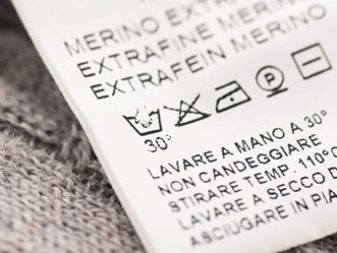
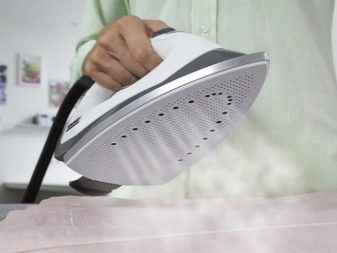
Vertical steaming
This function in various types of steamers is convenient not only because there is no need to use an ironing board, but also for a number of reasons. For example, it allows you to take care of a felt hat that cannot be wrinkled or bent. It is also irreplaceable if you want to steam up your upholstered furniture. This is especially convenient if you are using covers. It will be possible to give them their original appearance directly on the spot. That is, you put them on the furniture and start ironing. Young mothers fear that dangerous bacteria accumulate on the carpet and soft toys. You can carry out a kind of disinfection using a steamer. After all, the steam temperature is high enough to destroy most of the dangerous microorganisms.
Another wide area of application is curtain ironing. Moreover, they can be made of various fabrics (nylon, polyester, organza). You can iron them when the product is still wet or dry.
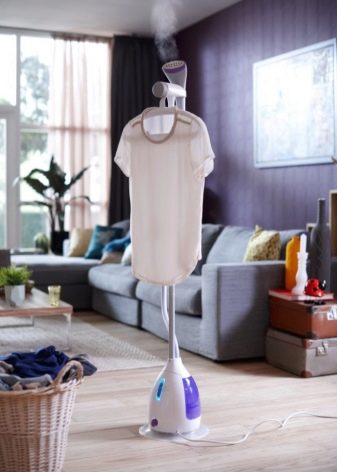

Advice
In addition to the above-described advantages and methods of using the steamer, there are some other cases that can be mentioned. when using it greatly simplifies housework.
- Overdried laundry. Manufacturers of clothing and other textiles advise ironing products only after they are completely dry. But when the laundry is too dry (especially if no softener was used during washing), it is difficult to iron it in the usual way. Then you have to re-wet or iron it through damp gauze. This is no longer necessary if you use steam ironing. A targeted jet of moist, hot air does it all for you. In this case, you can not be afraid to damage the vulnerable tissue and fibers.
- Creases. Even when using aggressive high temperatures, they are very difficult to get rid of. The best option here would be to use a steam generator.By acting on the fabric with both hot steam and its own weight, it does an excellent job of ironing such difficult areas.

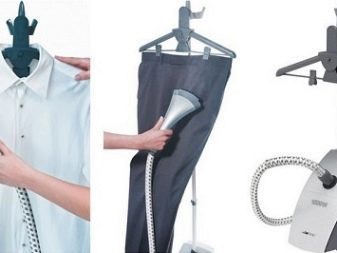
- Baby clothes. In addition to the fact that in most cases it is made from natural materials, ironing of which is fraught with the risk of damage to the fiber, the tiny dimensions also introduce additional difficulties. The steamer will easily smooth out even the smallest details such as sleeves and ruffles.
- Natural linen and pure cotton, woolen products. Products made from these fabrics are difficult to iron, even if they are not dry. Linen curtains, drapes and tablecloths often have severe creases after washing. But you can avoid additional difficulties simply by hanging the curtains on the cornice (and putting the tablecloth on the table) and start ironing with a steamer.
Modern steamers provide many advantages for housewives. They save time and make maintenance possible even for very delicate materials. The way they work is pretty simple. Many are scared off by the price and unusualness of the structures themselves. But all doubts about the convenience of their use disappear after just a few ironing sessions.
For information on how to use the garment steamer, see the next video.







